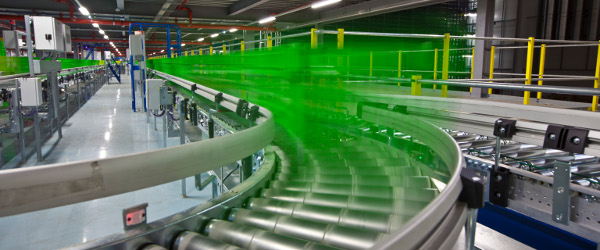
While many people consider Ocado to just be the grocery delivery service for Waitrose, and now Morrisons, the company actually has its own technology division.
Ocado Technology employs around 350 software engineers and technical specialists who build the technology solutions that power Ocado. This extends past the online retail features of websites and mobile apps to solutions for delivery route optimisation, vehicle tracking, industrial automation, robotics and many more.
Director of technology, Paul Clarke, talks to CBR about what goes on inbetween the van deliveries.

Why do you think Ocado is perceived by many as just a grocery delivery company and not as a technology base?
There’s a transition going on there. From our point of view internally, nothing has changed. We’ve seen ourselves as a technology company right from the start and certainly the idea was that we were building technology so that one day it could be used for non-food purposes. It’s not something that kind of came upon us, it was always on the plan. But obviously we had our own business to cover first.
There have been some stupid comments by analysts in the past saying that all you need to do online retail is a bunch of vans and a website, but that’s such a ridiculous comment because to do what we do at the level fulfilment rate and quality and service requires an enormous amount of complexity under the bonnet in terms of algorithms and software. We have an automated warehouse-based system and a level of end-to-end and automation that is very different. So I think that’s probably a big part of it: not appreciating just how much we do.
Ocado reported an annual loss this year, stating that it wants to invest more money into its future. How is money being reinvested in the technology division?
We’re always looking for better ways to do what we currently do, better mousetraps and ways to automate parts of our process that we haven’t yet automated. We started out doing the obvious ones first, and then we’ve tackled the next one and slowly over time we’ve automated a very large part but there’s still lots more to do.
Tim Steiner [Ocado’s CEO] spoke about a lot of re-platforming that’s going on to get our technology stack ready for some of the exciting things we’re planning to do in the future. We’re continuing to evolve our customer website and make our mobile apps even smarter. We’re going a lot of work on big data and analytics, it really is across the board. We have a huge backlog of things we would like to do.
What else is Ocado’s robotic team working on?
They are busy building applications for the future. The 10X department are focused on what Google would call moonshot projects, which are for the future.
There are all sorts of arduous manual processes involved in our business model and we are keen to look for ways to make better use of technology to make those tasks easier. Robotics is certainly one of them. You cannot buy the systems off the shelf to do the things that we are planning to do, therefore we need to build new kinds of vision systems to allow us to do that.
But vision systems is the difficult part. The robotics part is more straight forward. The vision part is more complicated because it’s not just repetitive. You need a robot to make decisions on the fly, rather than just training it to do the same actions time in, time out.
We need robots to be able to adapt their behaviour to do different things each time and to take account of environmental factors, things outside of their control and for that reason they have to be more aware, hence the importance of vision systems.

How is technology used to optimise your delivery service?
We have a lot of big data at the back end of our model. Our vans are like little sensing platforms: they record all sorts of data about road speed, engine revs, fuel consumption, how fast they’re cornering etc. All that data is streamed back, some in real time and some when they come back to the depot and that data is fed back into our routing system to optimise future routes.
It’s creating a virtuous circle driven by data so that our future routes are even better than the ones we’re driving today.
What is the next phase of growth for Ocado?
The re-platforming exercise is a very important part [of Ocado’s future] but we are going to continue to build on our intellectual property, which is our effective end-to-end e-commerce platform including logistics as well as front end and last mile operation.
We’re going to be continuing to look for ways to monetise that intellectual property whether that through other kinds of non-food deals in the UK or internationally. In the UK there won’t be any more grocery deals because the deal we signed with Morrison’s is exclusively with them [as well as the long-standing deal with Waitrose].
That monetisation of our intellectual property is important going forward and we look to continue to improve the customer offer and the efficiency of our existing operation.






